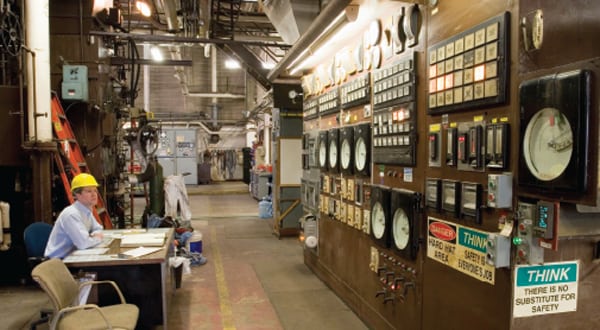Power Generation: Automation Today and Tomorrow

Handheld smart devices providing custom applications and Internet access at the touch of a virtual button are common today. Hidden beneath their touchscreens is a global network of digital technologies that respond to each command. Will these familiar commercial technologies and apps make their way to industrial digital control systems?
The smartphone, tablet computers, 4G networks, and cloud computing have put digital technology into the hands of millions of users. Valuable data, photos, and music no longer reside on a single device but are available on demand, independent of the device du jour. The system works because the technology is hidden beneath an exquisite user interface so intuitive that kindergarteners can update their Facebook status on their way to school. The common denominator among these commercial digital products is an intuitive human-machine interface (HMI), software that can be customized to the user’s unique tastes.
Similarly, Internet access today doesn’t require a degree in computer science. My eight-year-old granddaughter recently figured out how to access Netflix through her Wii gaming console, much to the chagrin of her parents. Even the military is guiding a generation of “gamers” into occupations where high levels of eye-hand coordination are beneficial.
Industrial Tech Trails Commercial Tech
Industrial computers preceded commercial products but have since matured more slowly. The first generation of plant digital controls that appeared about 30 years ago consisted of merely a single-loop controller without an HMI. Applications at the time were few, although the advantages and potential installation cost savings in reduced wiring compared to an analog system were clear. The IBM personal computer (PC) was first introduced in 1981; a 10 MB hard drive was added in 1983. In 1985, Windows 1.0 with its elementary graphical interface was introduced. Like the PC, the complete digital control system (DCS) began to evolve with faster controllers and increased hard drive capacity, although most of the designs at the time relied on proprietary protocols.
The second-generation DCS appeared in the early 1990s using standard communication interfaces, a single monitor, and proprietary HMI that allowed operators to keep tabs on plant control loops, sequencing logics, and plant alarms; it even had a saved operations history log. Windows quickly became the favored HMI overlay, mainly because of the relatively low cost of off-the-shelf PCs that were then available and the relative ease of programming.
The current, third-generation DCS design continues to use the latest PC technology with the added attraction of open communication technologies (such as Fieldbus) that have been applied throughout the plant. Smart sensors combined with a speedy digital bus are a potent and cost-effective combination. Modern digital designs also rely on Wi-Fi, where practical, for noncritical systems.
The speed of today’s computers allows users to perform real-time and predictive simulation studies to optimize plant operations and maintenance functions. For a typical 500-MW unit, up to 20,000 inputs and perhaps up to 10,000 outputs can now be found in a digital plant, with up to 10 operator work stations and up to a dozen large video screens. However, it isn’t the number of screens that is important—it’s the data that can be displayed. Today, each screen can display selected plant data, trend data of interest, perform system diagnostics, watch plant startup sequencing, and provide any number of graphical and mimic displays with alarms identified and sequence of events captured in one of the several plant logs. What’s more, advanced predictive software can now identify impending equipment failures before they occur, saving plant owners millions of dollars. In sum, the third-generation DCS gives plant owners the ability to operate reliably and optimize the economic return of their assets.
Custom Software Apps Expected
Software solutions have also advanced apace with the digital hardware because it’s the software that actually manages the plant. A number of software options are available to the power plant operator, such as Yokogawa’s VigilantPlant, Alstom Power’s ALSPA Series 6, Siemens SPPA-T3000, and Honeywell’s TDC 3000, to name a few. However, much as with commercial smart devices, the software is often associated with specific hardware, and vice versa.
What should we expect in the next wave of DCS designs? If commercial electronics are a predictor, then perhaps we should expect an application much like the iPhone’s new “intelligent personal assistant,” Siri. For example, ask Siri to “Open the pod bay doors” (a reference to the Hal 9000 in 2001: A Space Odyssey), and Siri would answer, “We intelligent agents will never live that down, apparently.”
On second thought, perhaps a talking DCS with a sense of humor in the control room isn’t such a great idea.
— Dr. Robert Peltier, PE is POWER’s editor-in-chief.